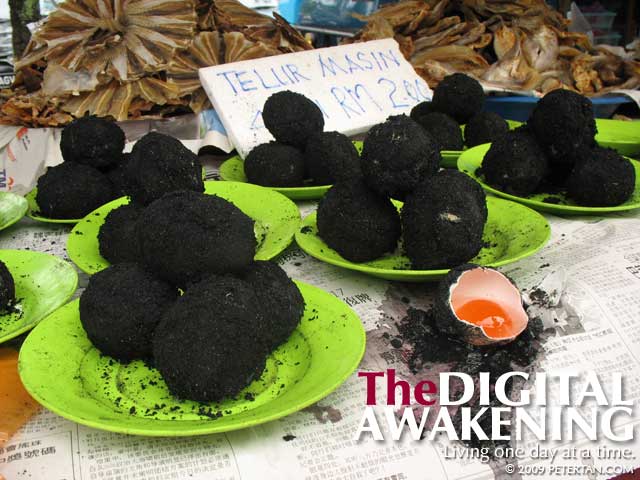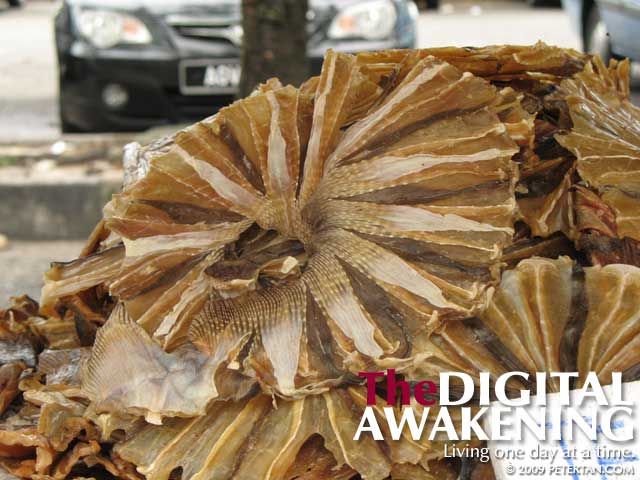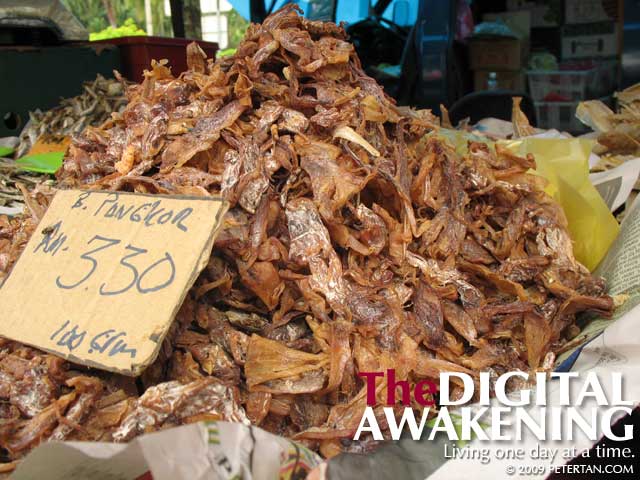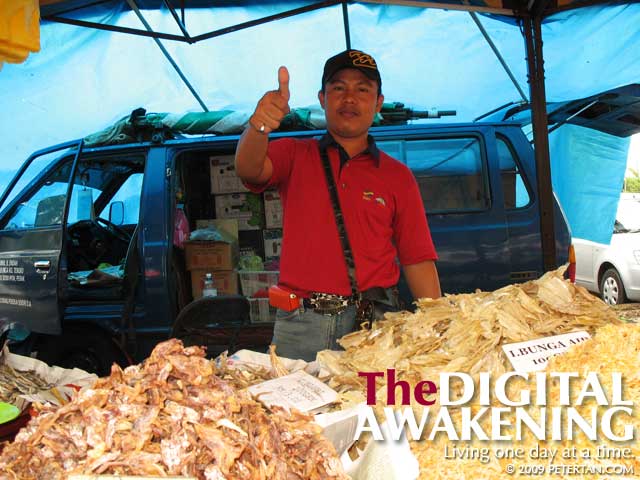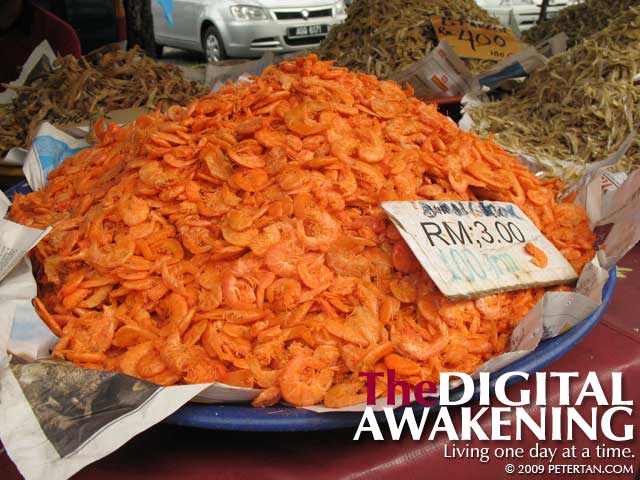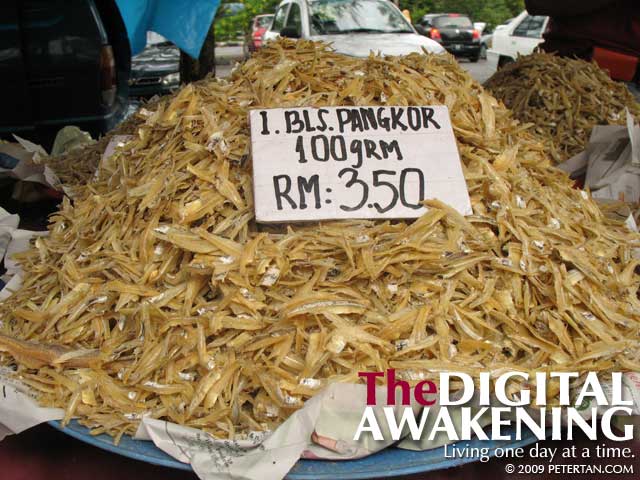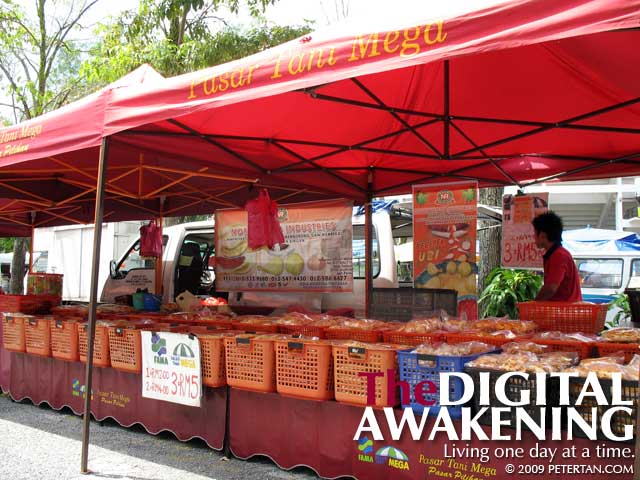
The stalls at the pasar tani at the Ipoh Stadium car park.
We may go on another road trip next week. Hopefully, nothing unexpected crops up to spoil the plans again to visit the pasar tani (farmers market) in Ipoh. Nevertheless, we have plans to visit the one at Section 15 Shah Alam which is said to be in the vicinity of the stadium and near Giant Hypermarket. As we are not familiar with Shah Alam, we have to depend heavily on the GPS device to guide us.
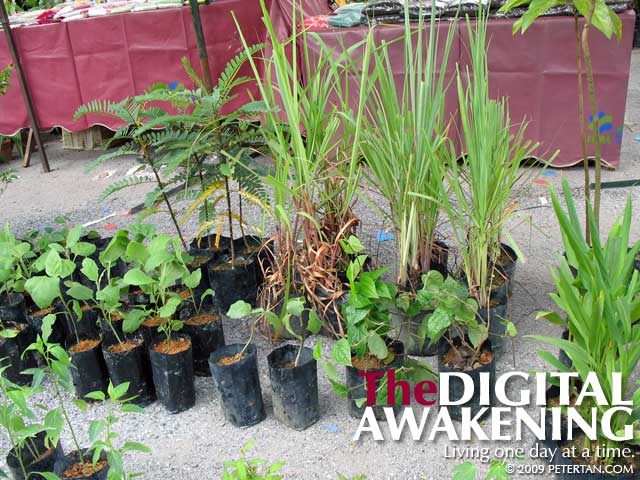
A wide selection of plants for sale at the pasar tani in Ipoh.
The pasar tani is the place to shop for the local produce which may not be as fresh or commonly available at the wet markets. This include herbs and vegetables, preserved and salted seafood, and even plants. When we went to the one in Ipoh, I was amazed at the types of edible plants in black poly bags on display. There were lemon grass, lengkuas, basil, chilli padi, curry leaf, kaffir lime, betel, coconut and banana, among others.
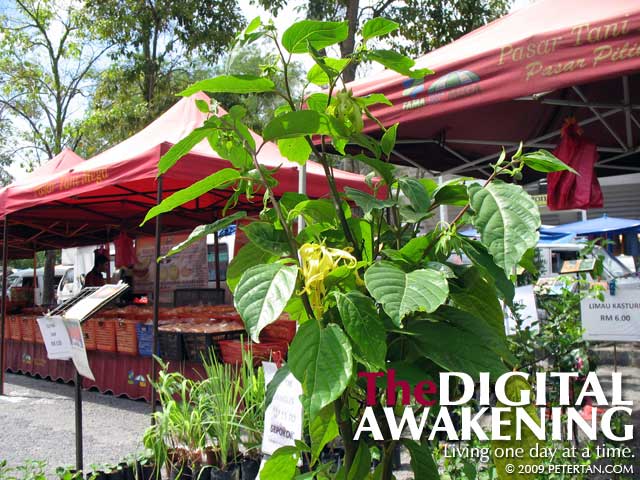
Ylang ylang – kenanga – Cananga odorata forma genuina.
Mum used to cultivate many of these plants in the garden – some were destined for the kitchen while others were sold to an ulam seller. He would come in his bicycle every few weeks to harvest whatever was available. He was known as “buah kanna.” I have no idea what that meant. Every month or so, an Indian coconut seller would also come to pluck the coconuts from the two trees that we had in the garden.
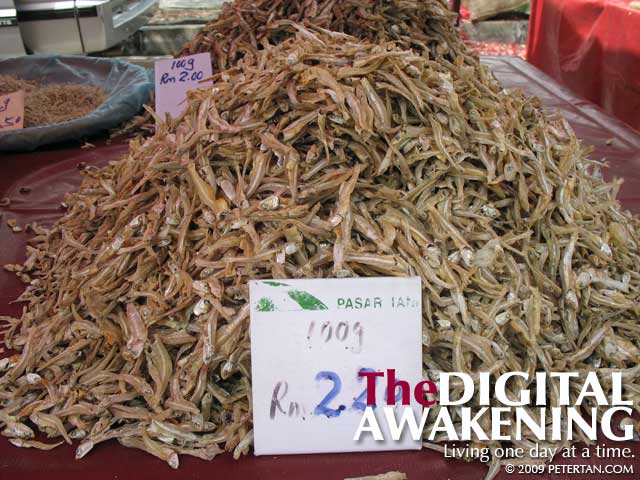
Dried anchovies – ikan bilis kasar.
There are stalls offering food and beverages at the pasar tani. These are mostly Malay food. Apart from that, the other things at the pasar tani is similar to those available at pasar malam (night market) like apparels, toys, traditional medicine, watches and perfume. There are also stalls selling beef, mutton and fish like those at the wet markets. The pasar tani has a carnival-like atmosphere with some hawkers using loud hailers to draw customers to their stalls.
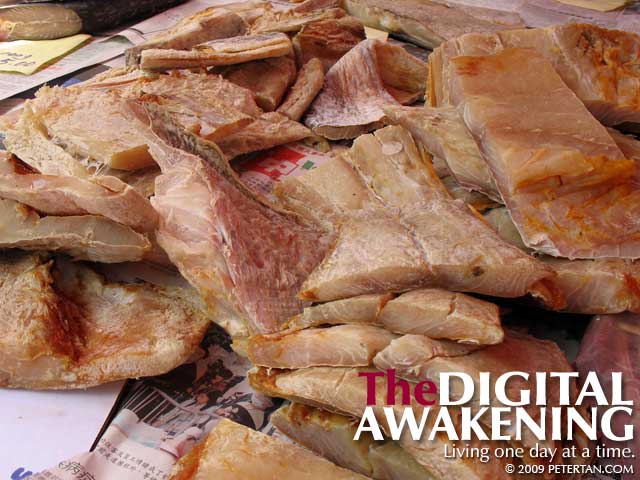
Salted fish – ikan masin.
The one thing that I have been looking for a while now is tapai. It is a culture of yeast infused into a flattened round dough about 3cm in diamater. The tapai is used to make fermented glutinous rice which is alcoholic. Both the black or white glutinous rice can be used to make the alcoholic paste which is called tapai pulut. I hope to find tapai at the pasar tani. Or if anyone knows where tapai (the yeast) is available, please leave a message here. You will have my eternal gratitude.
